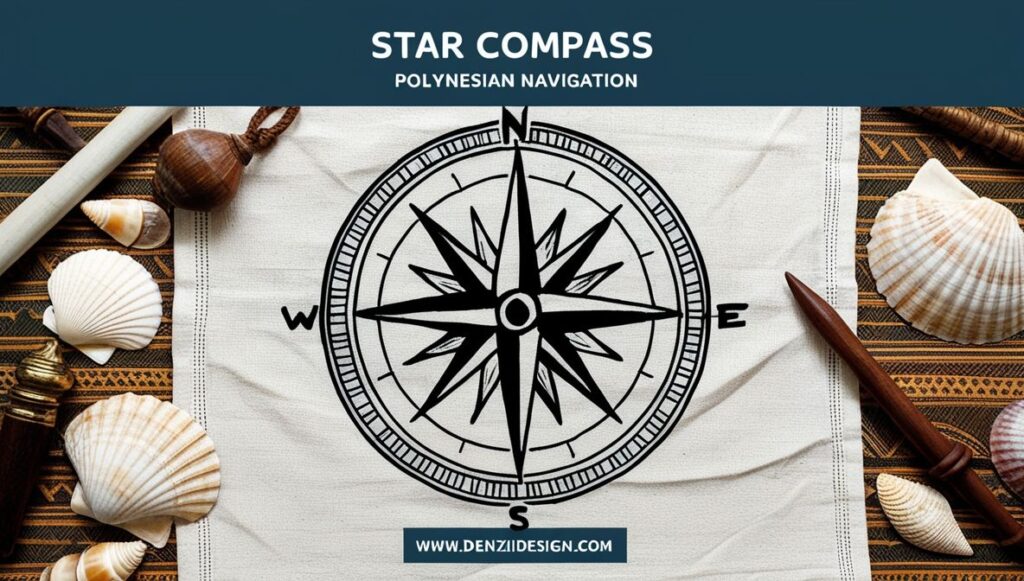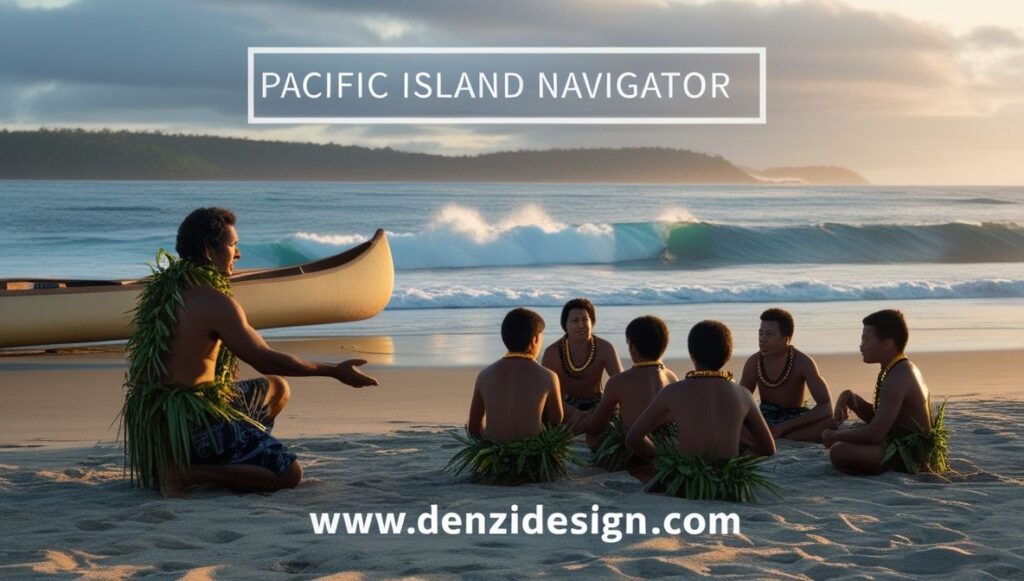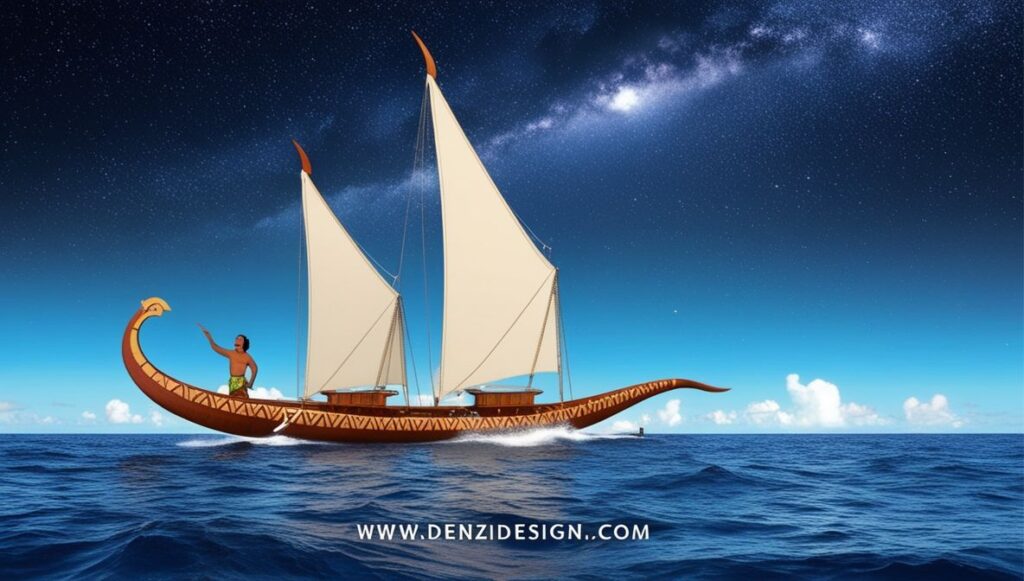Falotani is the forgotten heartbeat of Polynesian navigation, a system of traditional navigation that guided voyagers across thousands of miles of open ocean without instruments. This ancient knowledge relied on reading the stars, interpreting swell patterns, tracking seabird flight patterns, and using deep environmental literacy to travel with astonishing accuracy. Passed down through oral tradition knowledge, Falotani helped shape the vast network of Pacific Island cultures long before modern maps existed.
Today, this once-endangered system is experiencing a powerful resurgence. As the world rediscovers the brilliance of navigation without instruments, Falotani stands as a symbol of resilience, innovation, and the enduring wisdom of indigenous knowledge systems.
The Origins of Falotani
Falotani emerged as a planned Pacific settlement strategy during early Austronesian migrations. Developed between 1200 BCE and 800 BCE, it allowed seafarers to explore and settle remote islands across the Pacific, long before compasses or sextants existed.
This knowledge system evolved through oral tradition knowledge, where every lesson was memorized, tested at sea, and passed down by wayfinding apprenticeship.
How Falotani Worked Without Instruments
Falotani was based on navigation without instruments, relying on the human body and natural world as tools. Master navigators were trained to read subtle clues like wind shifts, star alignments, and the rhythm of ocean swells.
They used traditional environmental observation and environmental literacy to detect cues most people overlook—like the way clouds form above islands or how seabirds travel at dawn.
The Four Pillars of Traditional Wayfinding
Falotani relied on a structured system grounded in observation, memory, and logic. These pillars supported Pacific Island voyaging across thousands of miles.
1. Celestial Navigation and the Star Compass

Celestial navigation formed the foundation. Navigators used celestial bodies for navigation, tracking zenith stars, seasonal star calendars, and star paths (kaveinga) to maintain direction.
Table: Example of a Basic Star Compass
| Direction | Key Stars Used | Season | Navigation Purpose |
|---|---|---|---|
| East | Aldebaran | Spring | Departure planning |
| North | Polaris | Winter | Bearing correction |
| West | Canopus | Fall | Midway recalibration |
| South | Sirius | Summer | Island approach |
2. Ocean Swells and Wave Reading
The ocean’s surface tells its own story. Wave reading, especially recognizing swell patterns and island wave interference, helped navigators sense direction often even with eyes closed.
3. Biological and Ecological Indicators
Navigators studied bird navigation, cloud formation navigation, and biological indicators like wave shadows, seabird flight patterns, and marine life behavior as natural navigation markers.
4. Canoe Motion Sensitivity and Kinesthetic Learning
Training involved building a bodily relationship with the canoe. Canoe motion sensitivity allowed navigators to detect directional shifts based solely on how the canoe moved.
Cognitive Brilliance: How the Brain Adapts
Recent studies show that traditional navigators develop heightened hippocampus spatial memory. The wayfinding skill isn’t just cultural—it’s neurological. The brain rewires itself to store complex mental maps and directions, often outperforming trained GPS users in spatial tasks.
This adaptive brain function supports the depth of traditional ecological knowledge embedded in Falotani.
Precision Rivaling Modern Tech
Ancient navigation techniques allowed precise open-sea travel with margin of error rates comparable to GPS. Voyages like those of Mau Piailug, who navigated thousands of miles using only his knowledge, proved the system’s accuracy.
Researchers continue to study how non-instrument navigation can inform climate adaptation strategies and resilience through tradition.
The Decline of Knowledge (1800–1970)
Colonial suppression and modernization led to a steep decline in seafaring traditions. With oral systems broken and missionary schools discouraging native learning, much of Falotani faded from practice.
However, it wasn’t gone it was sleeping.
The Revival: Hōkūleʻa and Mau Piailug
In 1976, the Hōkūleʻa, a double-hulled canoe, sailed from Hawaii to Tahiti without modern tools. Led by Mau Piailug, a Micronesian master navigator, the voyage reignited a global movement of Pacific exploration and cultural revival.
This was the turning point in navigation revival, leading to the formation of the Polynesian Voyaging Society and widespread educational initiatives.
Modern Applications of Ancient Wisdom
Falotani isn’t just for the past it has real value today:
- Climate adaptation strategies: Reading sea and sky to anticipate changes
- Education models: Promoting ocean literacy and hands-on learning
- Cultural preservation: Empowering indigenous identity and youth mentorship
The fusion of digital mapping and traditional wayfinding is helping communities reconnect with ancestral seas.
How to Learn Falotani Today

Want to dive deeper into Polynesian navigation?
- Join voyaging societies like the Polynesian Voyaging Society
- Participate in apprenticeships through programs like the Vaka Taumako Project
- Study online modules preserving oral knowledge and star compasses
Table: Learning Options for Modern Navigators
| Learning Method | Description | Best For |
|---|---|---|
| On-Canoe Apprenticeship | Hands-on ocean learning with experts | Serious practitioners |
| Digital Archives | Access to maps, oral histories, diagrams | Self-paced learners |
| Workshops & Retreats | Short courses on navigation techniques | Educators & enthusiasts |
The Future of Falotani
As Pacific communities face rising sea levels, the revival of traditional navigation offers more than nostalgia. It’s a toolkit for the future balancing traditional ecological knowledge with innovation.
By combining indigenous knowledge systems with technology, the next generation of master navigators is preparing not just to survive but to lead.
FAQs
What does Falotani mean?
Falotani refers to a traditional Polynesian navigation system rooted in oral memory and environmental observation.
Can people still learn Falotani today?
Yes, it’s taught through voyaging societies, traditional schools, and hands-on apprenticeships.
How accurate is traditional Polynesian navigation?
It’s incredibly accurate many voyages successfully span thousands of miles without modern tools.
Final Thoughts
Falotani is more than just an old way to travel. It’s a powerful reminder of human skill, memory, and connection to nature. This system helped shape the Pacific and still teaches us today.
As we face modern challenges like climate change, Falotani offers smart, natural ways to adapt. It brings people closer to the ocean, the stars, and their culture.
Learning and sharing Falotani keeps this ancient wisdom alive. It’s not lost it’s rising again. And it’s ready to guide a new generation across both water and life.

